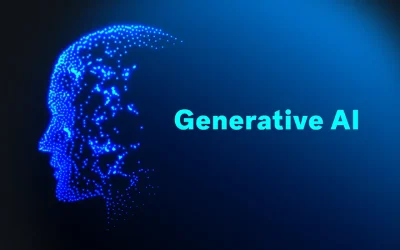Large Language Models (LLMs) have transformed artificial intelligence by enabling natural language understanding, text generation, and automated decision-making. However, one of their biggest challenges is hallucination—a phenomenon where AI generates incorrect, misleading, or entirely fabricated information while presenting it as fact. These hallucinations undermine trust in AI applications, making them unreliable for critical use cases like healthcare, finance, and legal research. LLM Hallucinations arise due to various reasons, including biases in training data, overgeneralization, and lack of real-world verification mechanisms. Unlike human reasoning, LLMs predict text probabilistically, meaning they sometimes generate responses based on statistical patterns rather than factual correctness. This limitation can lead to misinformation, causing real-world consequences when AI is used in sensitive decision-making environments.
To address this challenge, Agentic AI has emerged as a promising solution. Agentic AI enables models to think more critically, verify information from external sources, and refine their responses before finalizing an answer. By incorporating structured reasoning and self-assessment mechanisms, Agentic AI can significantly reduce hallucinations and improve AI reliability. This article explores the root causes of hallucinations, introduces Agentic AI as a solution, and discusses practical techniques such as Chain-of-Thought prompting, Retrieval-Augmented Generation (RAG), and self-consistency decoding to enhance AI accuracy. By the end, you will gain a deeper understanding of how to make LLMs more reliable and trustworthy for real-world applications.
Understanding LLM Hallucinations
LLM hallucinations occur when an AI model generates false, misleading, or unverifiable information while presenting it with confidence. These errors can range from minor inaccuracies to entirely fabricated facts, making them a critical challenge for AI-driven applications.
Causes of LLM Hallucinations
Several factors contribute to hallucinations in LLMs, including:
- Training Data Biases: AI models are trained on vast datasets collected from the internet, which may contain misinformation, outdated knowledge, or biased perspectives. Since LLMs learn from these sources, they may replicate and even amplify errors.
- Overgeneralization: LLMs rely on probabilistic language patterns rather than true understanding. This can cause them to generate plausible-sounding but incorrect information, especially in areas where they lack factual knowledge.
- Lack of Real-World Verification: Unlike human experts who cross-check sources, most LLMs do not verify their outputs against real-world data. If the model lacks external retrieval mechanisms, it may confidently produce errors without recognizing them.
- Contextual Memory Limitations: AI models have limited context windows, meaning they might forget or misinterpret prior details in long conversations. This can lead to contradictions and factual inconsistencies within the same discussion.
Why Hallucinations Are a Serious Problem
Hallucinations are more than just technical errors—they pose real risks in AI applications such as:
- Healthcare: An AI-generated misdiagnosis could lead to incorrect treatments.
- Legal AI Tools: Inaccurate legal interpretations could mislead professionals and clients.
- Financial Advice : Misleading stock predictions could cause monetary losses.
To make AI models more trustworthy and useful, we need mechanisms that reduce hallucinations while maintaining their ability to generate creative and insightful responses. This is where Agentic AI comes into play.
What is Agentic AI?
Agentic AI refers to artificial intelligence systems that autonomously verify, refine, and improve their responses before finalizing an answer. Unlike traditional LLMs that generate text based on statistical probabilities, Agentic AI incorporates self-assessment, external fact-checking, and iterative reasoning to produce more reliable outputs.
How Agentic AI Differs from Standard LLMs
Most LLMs function as static text predictors—they generate responses based on learned patterns without actively verifying their correctness. In contrast, Agentic AI behaves more like a reasoning system that actively evaluates its own responses using multiple techniques, such as:
- Self-Assessment: The AI checks whether its own response aligns with known facts or logical reasoning.
- External Knowledge Retrieval: Instead of relying solely on training data, Agentic AI retrieves and integrates real-time information from verified sources.
- Multi-Step Reasoning: The model breaks down complex problems into logical steps, ensuring accuracy at each stage before forming a final response.
Example: Agentic AI in Action
Imagine an LLM assisting with medical queries. If asked, “What are the latest treatments for Type 2 diabetes?”, a standard LLM might generate an outdated response based on its pre-trained knowledge. However, an Agentic AI system would:
- Retrieve recent medical literature from trusted databases (e.g., PubMed, WHO).
- Cross-check multiple sources to ensure consistency in recommendations.
- Present an answer with citations to improve credibility.
By adopting this approach, Agentic AI minimizes hallucinations and ensures that AI-generated content is not only coherent but also factually sound.
Techniques to Reduce LLM Hallucinations
Reducing hallucinations in Large Language Models (LLMs) requires a combination of structured reasoning, external verification, and advanced prompting techniques. By integrating Agentic AI principles, we can significantly improve the accuracy and reliability of AI-generated responses. Below are some of the most effective techniques for minimizing hallucinations in LLMs.
Chain-of-Thought (CoT) Prompting
Chain-of-Thought (CoT) prompting improves AI reasoning by guiding the model to explain its thought process step by step before producing an answer. Instead of generating a direct response, the model follows a structured breakdown, reducing errors caused by overgeneralization or misinterpretation.
For example, if asked, “How do you calculate the area of a triangle?”, an LLM might respond with just the formula. However, with CoT prompting, it will first explain the logic behind the formula before arriving at the final answer. This structured approach enhances the accuracy and interpretability of AI responses.
Self-Consistency Decoding
Self-consistency decoding improves response reliability by making the model generate multiple independent answers to the same query and selecting the most consistent one. Instead of relying on a single prediction, the AI produces different reasoning paths, evaluates their coherence, and then chooses the most frequent or logically sound outcome. This technique is particularly useful in math, logic-based reasoning, and factual queries, where LLMs sometimes generate conflicting results. By reinforcing consensus, self-consistency decoding significantly reduces uncertainty and hallucination risks.
Retrieval-Augmented Generation (RAG)
LLMs often hallucinate when responding based on outdated or incomplete training data. Retrieval-Augmented Generation (RAG) helps mitigate this issue by allowing AI to fetch and integrate real-time information from external databases, APIs, or verified sources before generating responses. For instance, when asked, “Who won the most recent FIFA World Cup?”, a standard LLM may produce outdated information if its training data is old. In contrast, an AI using RAG would retrieve live sports updates and provide the latest, accurate result.
Feedback Loops and Verification Mechanisms
Implementing human-in-the-loop and automated verification systems allows LLMs to refine their responses based on external feedback. This can be achieved through:
- User Feedback Mechanisms: Users flag incorrect outputs, helping the model improve over time.
- Cross-Checking with Trusted Databases: AI compares its responses with verified sources like Wikipedia, Google Scholar, or government databases.
- Automated Fact-Checking Models: LLMs run responses through specialized fact-checking algorithms before presenting the final answer.
Memory-Augmented LLMs
Traditional LLMs have a limited context window, often forgetting information from earlier parts of a conversation. Memory-augmented AI retains contextual knowledge across interactions, improving consistency in responses.
For example, if a user asks an AI assistant about a financial investment strategy today and follows up with a related question a week later, a memory-augmented system will remember prior details and maintain continuity in reasoning rather than treating each query in isolation.
Agentic AI’s Role in Fact-Checking
Agentic AI integrates multiple verification layers before finalizing an answer. This involves:
- Running multi-step reasoning to assess answer validity.
- Checking responses against multiple sources to eliminate contradictions.
- Generating confidence scores to indicate how reliable an answer is.
By leveraging these fact-checking techniques, Agentic AI makes LLM-generated content more accurate, trustworthy, and resistant to hallucinations.
Real-World Applications of Agentic AI
As AI adoption grows across industries, the need for reliable and accurate responses has become critical. Many sectors are now integrating Agentic AI techniques to reduce hallucinations and enhance the trustworthiness of Large Language Models (LLMs). Below are some key areas where these advancements are making a significant impact.
Healthcare: AI-Assisted Medical Diagnosis
In healthcare, AI-powered models assist doctors by analyzing patient symptoms, medical records, and research papers. However, incorrect diagnoses due to hallucinated data can have serious consequences. Agentic AI helps mitigate risks by:
- Cross-referencing medical knowledge with verified databases like PubMed and WHO reports.
- Using self-consistency decoding to avoid contradictory recommendations.
- Implementing human-in-the-loop verification, where doctors review AI-generated insights before making final decisions.
Legal and Compliance: Preventing Misinformation in Law
Legal professionals use AI for contract analysis, case law research, and compliance verification. Since legal interpretations must be precise, Agentic AI improves accuracy by:
- Retrieving the latest regulations through real-time legal databases.
- Running multi-step reasoning to ensure case references align with legal principles.
- Using memory-augmented LLMs to maintain consistency across long legal documents.
Financial Sector: AI-Driven Risk Analysis
Financial institutions use AI to analyze market trends, predict risks, and automate decision-making. Hallucinations in financial AI can lead to misguided investments or regulatory non-compliance. To prevent errors, banks and financial firms implement:
- RAG (Retrieval-Augmented Generation) to fetch real-time stock market updates.
- Self-assessment mechanisms where AI verifies economic forecasts before making recommendations.
- Agentic AI chatbots that fact-check answers before providing financial advice to clients.
Journalism and Content Generation
AI-generated news articles and reports must be factually correct, especially in journalism. Agentic AI enhances credibility by:
- Running automated fact-checking algorithms to verify news sources.
- Using feedback loops where journalists correct AI-generated drafts, improving future outputs.
- Ensuring context-aware responses, preventing AI from misinterpreting quotes or historical events.
Customer Support and AI Chatbots
AI chatbots are widely used for customer service, but hallucinated responses can damage a company’s reputation. To improve chatbot reliability, companies integrate:
- Memory-augmented AI, ensuring customer history and preferences are remembered for personalized responses.
- Self-consistency decoding, where multiple chatbot responses are evaluated before displaying the best one.
- Agentic AI-based escalation mechanisms, where complex queries are automatically flagged for human review.
Scientific Research and AI-Assisted Discovery
AI is revolutionizing scientific research by assisting in drug discovery, climate modeling, and physics simulations. However, incorrect predictions due to AI hallucinations can mislead researchers. Agentic AI enhances scientific accuracy by:
- Implementing multi-source validation, where AI-generated hypotheses are cross-checked with multiple datasets.
- Using Chain-of-Thought prompting to ensure logical progression in AI-generated research conclusions.
- Employing human-AI collaboration, where scientists validate AI-driven insights before publishing findings.
The Future of Agentic AI in Real-World Applications
As AI continues to evolve, Agentic AI will become a fundamental component in ensuring the accuracy and trustworthiness of AI-driven systems. By integrating structured reasoning, real-time verification, and feedback loops, industries can significantly reduce hallucinations, making AI more dependable for critical decision-making.
Challenges in Implementing Agentic AI
While Agentic AI offers powerful solutions to reduce hallucinations in Large Language Models (LLMs), integrating these techniques comes with several challenges. From computational limitations to ethical concerns, organizations must address these hurdles to ensure AI remains reliable and efficient. Below are some key challenges in implementing Agentic AI.
Computational Overhead and Resource Constraints
Agentic AI requires additional processing power to conduct self-assessment, fact-checking, and multi-step reasoning. This can lead to:
- Slower response times: Unlike standard LLMs that generate responses instantly, Agentic AI models perform multiple verification steps, increasing latency.
- Higher computational costs: Running external data retrieval, self-consistency checks, and memory-augmented processing requires advanced infrastructure and more computational resources.
- Scalability issues: Deploying high-powered Agentic AI at a large scale, such as in enterprise applications, remains a challenge due to hardware and energy limitations.
Dependence on External Data Sources
Agentic AI relies on real-time information retrieval to fact-check responses, but this presents several challenges:
- Access to reliable databases: Not all AI systems have unrestricted access to trusted sources (e.g., academic journals, government records). Paywalled or proprietary data can limit the effectiveness of real-time retrieval.
- Data credibility issues: AI systems must determine whether external sources are trustworthy, as misinformation can still exist in search results or unverified publications.
- Data freshness concerns: AI models need continuous updates to stay current with new laws, scientific discoveries, and emerging events. Without frequent retraining, even Agentic AI can fall behind.
Handling Ambiguity and Contradictions
Agentic AI performs self-assessment by comparing multiple sources, but in cases where conflicting information exists, the model must decide which data to trust. This presents challenges such as:
- Discerning fact from opinion: AI might struggle to differentiate between expert-backed evidence and subjective viewpoints.
- Resolving contradictions: If two credible sources provide different answers, Agentic AI must apply logical reasoning to resolve discrepancies.
- Contextual misinterpretations: AI may retrieve accurate data but misinterpret its meaning due to nuances in language.
Balancing Creativity with Accuracy
One of the advantages of LLMs is their ability to generate creative and diverse responses. However, strict fact-checking mechanisms in Agentic AI could:
- Limit AI’s creative potential: Enforcing high accuracy standards might make AI overly cautious, leading to bland, unoriginal responses.
- Reduce adaptability: Some applications, such as AI-powered storytelling, marketing, or brainstorming tools, rely on AI’s ability to generate speculative or imaginative ideas rather than strictly factual ones.
- Introduce unnecessary filtering: In cases where ambiguity is acceptable (e.g., philosophical discussions or futuristic predictions), excessive verification might hinder AI’s expressiveness.
Ethical Considerations and Bias Reduction
Ensuring fairness, transparency, and ethical AI development is another challenge when integrating Agentic AI techniques. Key concerns include:
- Bias amplification: AI might still inherit biases from its training data, and if it favors certain sources over others, systemic biases may persist.
- Explainability and transparency: Complex Agentic AI systems must provide users with clear justifications for why certain responses were chosen over others.
- Over-reliance on AI-generated verification: If AI systems become fully autonomous in self-checking, users may assume all AI outputs are completely reliable, reducing critical thinking in human-AI interactions.
Future Prospects: Overcoming These Challenges
Despite these challenges, researchers and AI developers are actively working on solutions such as:
- More efficient AI architectures to reduce computational costs while maintaining high accuracy.
- Hybrid AI-human collaboration to ensure humans remain involved in fact-checking and decision-making.
- Improved source validation mechanisms that prioritize high-quality, peer-reviewed, and reputable sources for AI verification.
- Adaptive AI reasoning models strike a balance between creativity and factual accuracy.
Conclusion
As AI systems continue to evolve, ensuring their reliability and accuracy remains a major challenge. Large Language Models (LLMs) have revolutionized various industries, but their tendency to hallucinate—producing incorrect or misleading information—has raised concerns about trustworthiness. Agentic AI presents a promising solution by incorporating structured reasoning, self-assessment mechanisms, and real-time verification to mitigate hallucinations. Despite its advantages, Agentic AI also comes with challenges, including computational overhead, reliance on external data sources, ambiguity in information retrieval, and ethical concerns. However, ongoing research and improvements in AI architectures will continue to refine these techniques, making LLMs more dependable, transparent, and useful for diverse applications.



